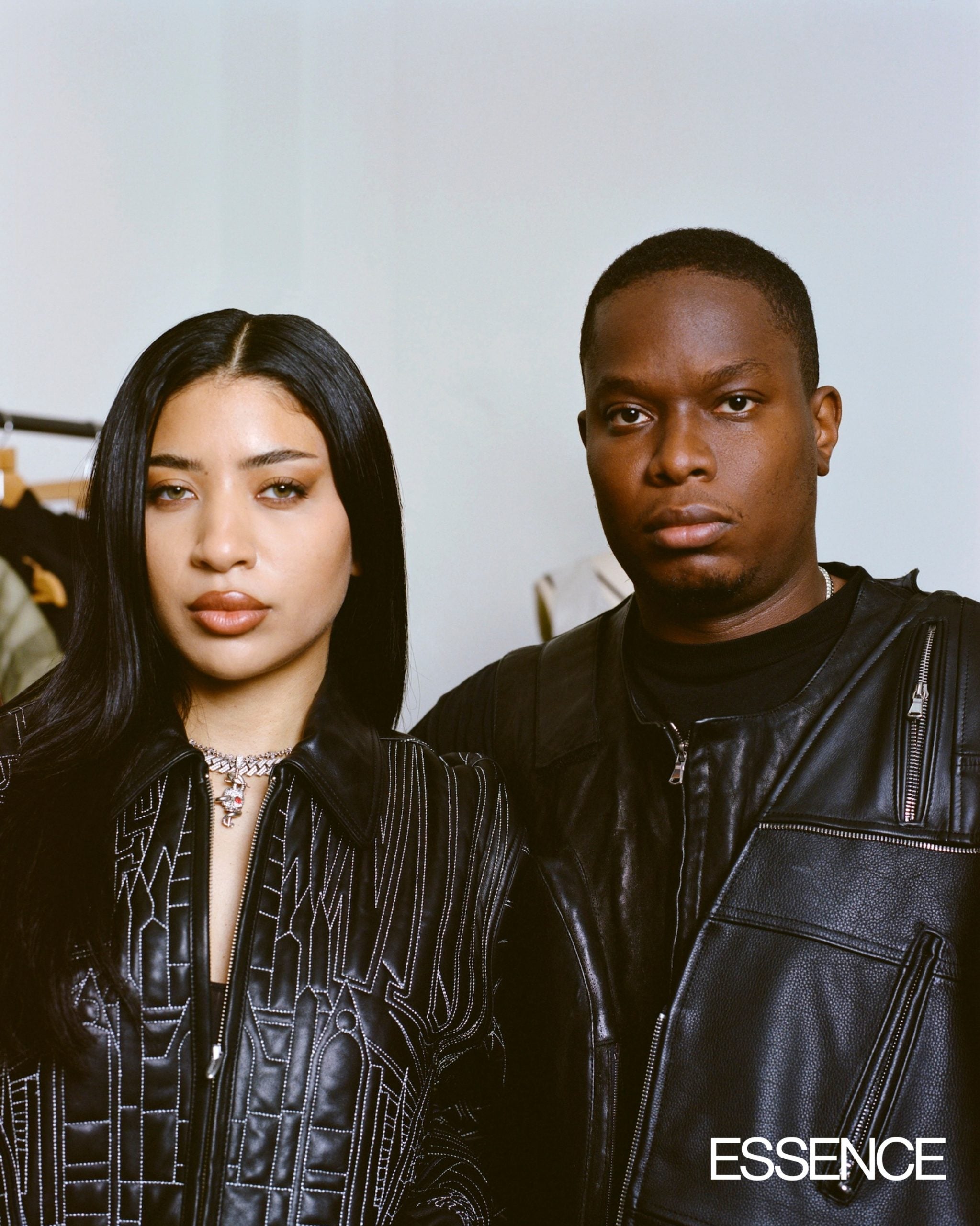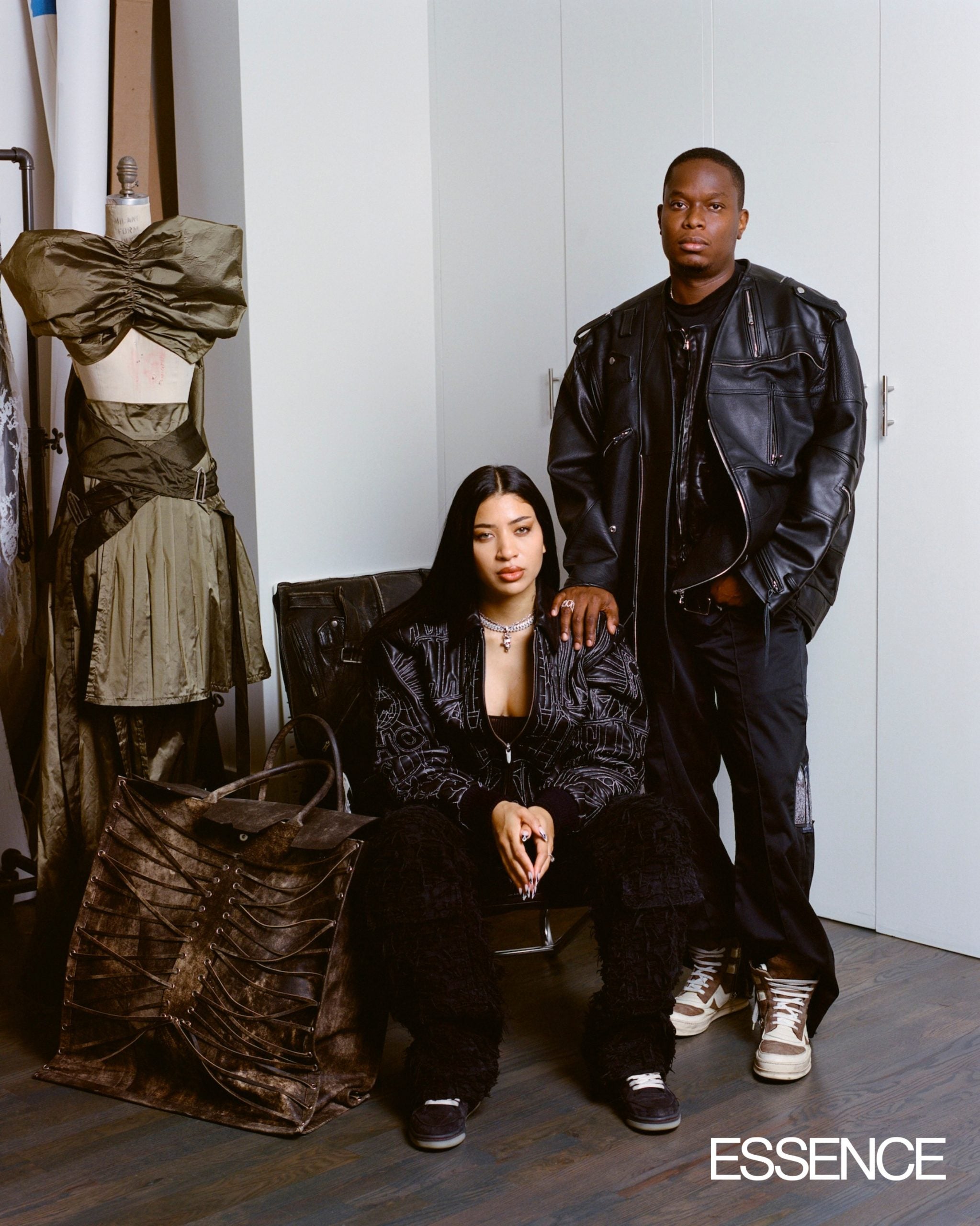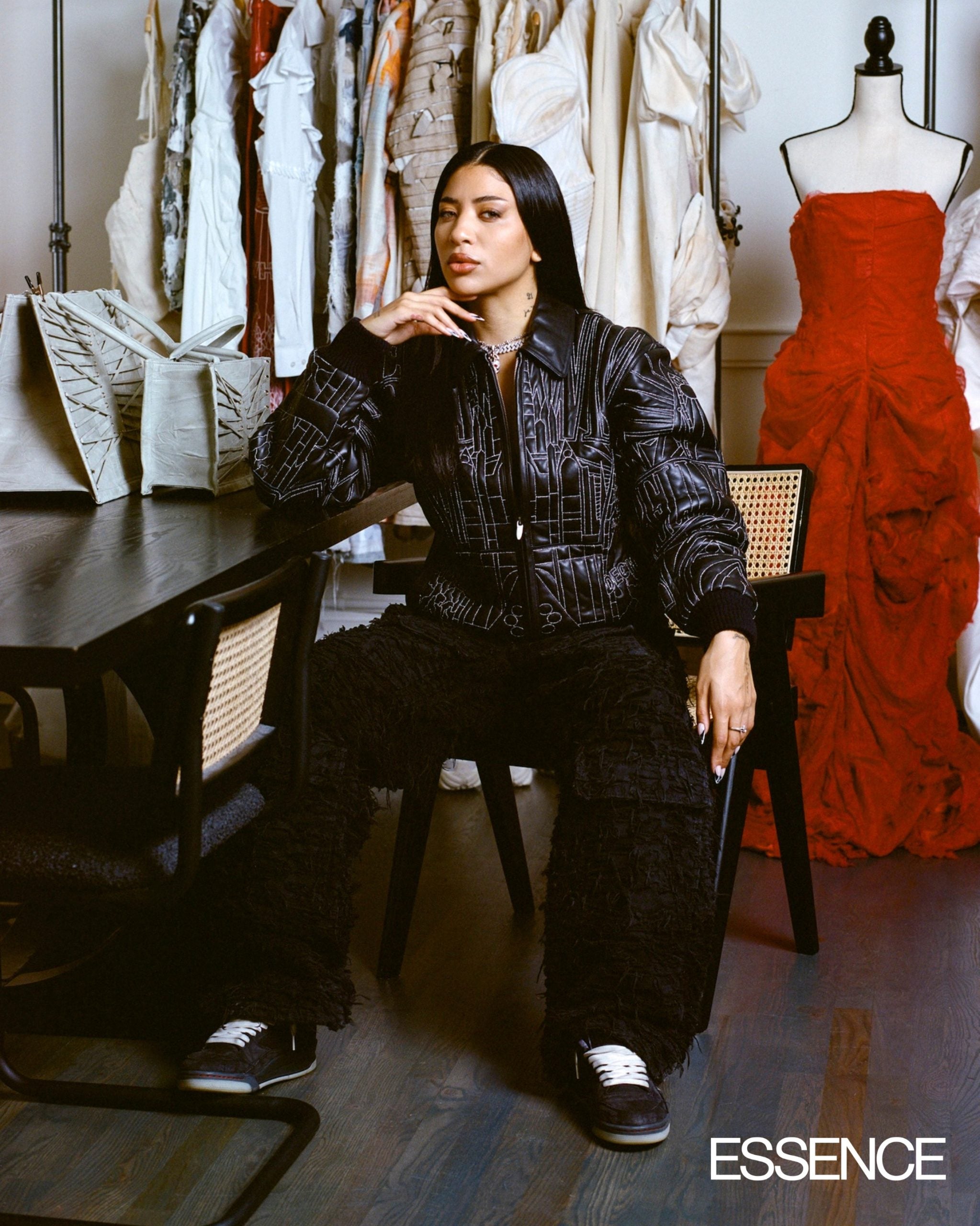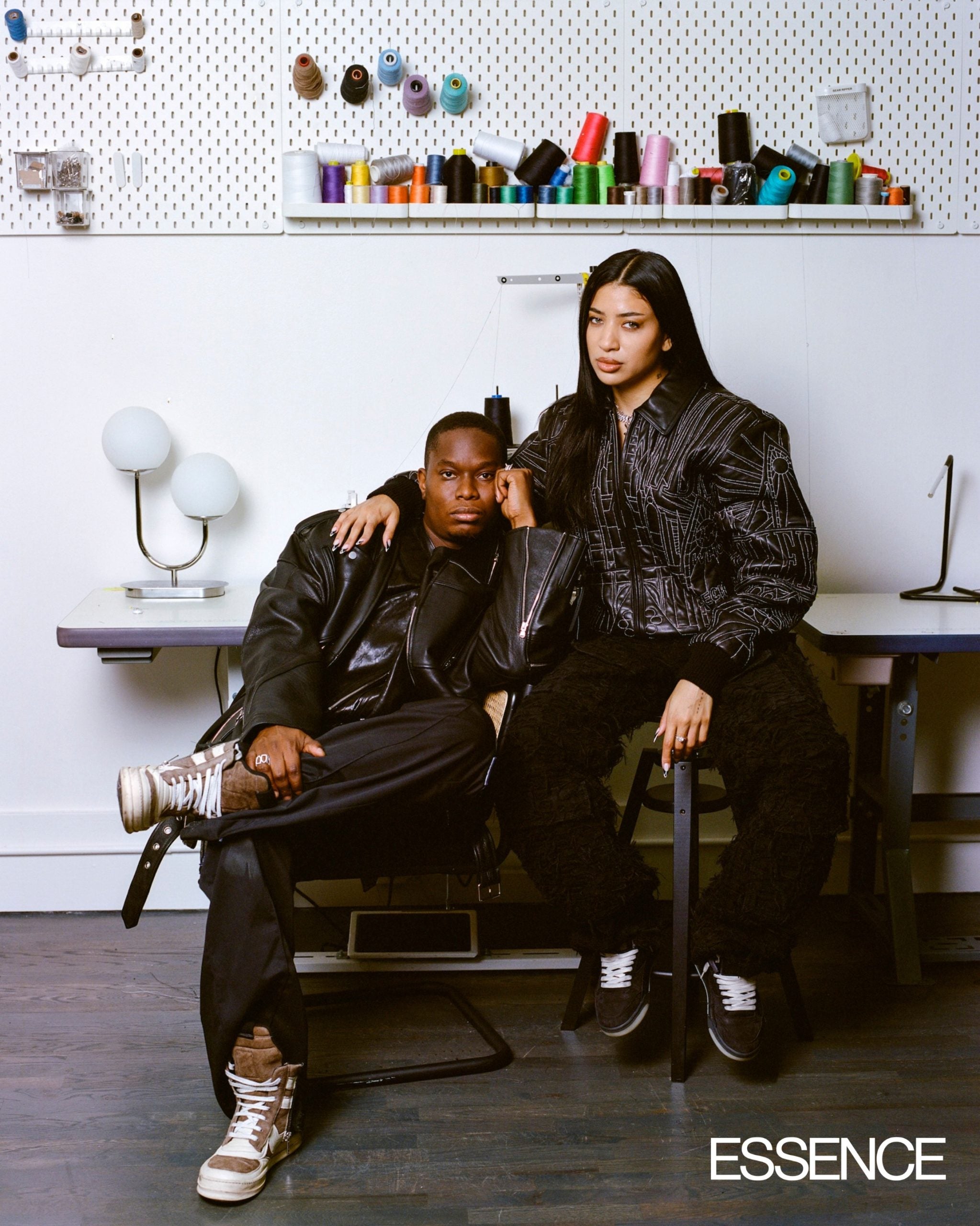
The Tumblr age has birthed a slew of names and superstars—some of whom are only now peaking, like Tyler, the Creator and Frank Ocean. Also born from the flames of reblogs and reposts is the streetwear brand Who Decides War. The principals behind it, life partners and business partners Everard Best and Téla D’Amore, remember that era well. “That’s how we started our business,” says Best over a video chat. “Instagram and Tumblr were the key channels for building our core fan base. They’re the ones who now walk into places like the Webster and Patron of the New and buy our clothes.”

Best met D’Amore on the streets of the Lower East Side—Ludlow Street, to be exact. Looking for a womens wear designer to develop his line, in the days before industry networking meant the swipe of DM, Best took his search to the place he knew the cool kids convened. It was familiar territory for the emerging designer, who often hung out around the corner of Prince and Lafayette with friends in hopes of getting snapped by street-style photographers. “There was a group of kids in my high school who would go to SoHo, and they were making a name for themselves,” Best recalls. “One of them knew Pharrell and would hang out with him, so I would join them in SoHo whenever I could. That’s how you got notoriety—just post up, take pictures, hopefully they will go viral on Tumblr, and then you’ll be able to sell something.”
“People can get up and look at an entire wardrobe, and choose to put our clothes on.”
—téla d’amore
D’Amore was part of the group—and years later, as she and Best developed their relationship, they would become CFDA Fashion Fund Finalists and LVMH Prize Semi-Finalists for Who Decides War. “I feel like we’re often referenced as a brand, so it was really nice to have that moment where we were recognized for creating certain things—especially after putting so many elements, like textiles and craftsmanship, into play consistently year after year. It was really an honor,” says D’Amore.
Unlike other brand stories, the tale of Who Decides War doesn’t have a fixed beginning. Instead it’s been a gradual process of constantly reworking and refining a narrative. The brand’s first iteration started with Best and his family of tailors. After immigrating from Barbados, his father and uncle took up tailoring as a means to fuel their passion for design—eventually opening their own shop, Alteration Consultants, in Long Island. (Best and D’Amore would later name their Spring/Summer 2024 Collection after the shop.) “My dad came first, and then my uncle came after to pursue a degree in design at Fashion Institute of Technology,” Best says. “But in the 90s, when they were starting the business, it was very hard for people of color to break through as designers. There was a lot of prejudice and barriers to break through.”

It was in that Long Island location that Best was able to soak up the meticulous process of constructing garments. However, he never fully envisioned making a career out of it. “I never really knew that I wanted to be in fashion—it wasn’t really a thing for me as a child,” he says. “But as I got older, clothing became a way for me to express myself.”
That evolved out of necessity. Over the ruling agenda of baggy pants and everything oversize that dominated in the mid-aughts, Best began raiding the women’s sections of stores to find the more snug fit of denim he preferred. “Back then there wasn’t a super-skinny jean like a Levi’s 511 for men. I remember going to Zara and buying a women’s size 10 jeans.”
Necessity also led D’Amore to designing clothes. Growing up with limited means, she learned how to sew from her mother, then began creating her own outfits from scratch instead of going to name-brand stores to buy them. “I had to learn how to make clothes to be able to have new things sometimes,” she remembers. “My mom was always tactical, savvy and resourceful—and those are things that I intrinsically picked up from her. The funniest thing was, when we recently moved into our new office, I brought the first sewing machine that my mom gave to me, which was this tiny little handheld machine. I still keep it with me, all the time.”
Like Best, D’Amore found denim to be a pain point as she was trying to fit in as a teenager in school. “I was awkwardly tall and skinny, so my jeans would always end up being high waters—I always had a flood around me,” she says. “Buying tall jeans online was really expensive, so I had to figure out how to extend them on the bottom myself. I was doing a lot of extensions!”

Perhaps this shared struggle with shortcomings in the denim industry led Who Decides War to become masters of it. Under the Ev Bravado name, the two have established a reputation for amped-up denim. The jeans are usually perfectly imperfect, with artful slashing and rips; and they’re often outfitted with appliqués and fabrics like tulle. Best and D’Amore were among the first to incorporate lace with denim jeans seriously; now it’s one of their signatures. When Virgil Abloh wanted to build out Off-White’s denim offering in 2019, it was Best he called to collaborate.
What began as Best’s specialized focus on handcrafted custom denim jeans has evolved into a full-scale designer label, with seasonal collections of both men’s and women’s clothes. When D’Amore became fully enveloped in the Ev Bravado brand, which would later become Who Decides War, Best says their first order of business was to “get a lawyer.” As D’Amore explains, “We developed and grew our company when collaborations were really exploding. We’ve been doing collaborations since we were babies in this, but we knew we needed a strong legal side, to look over all of the contracts that we were doing and any partnerships.”
The two lead a small team of nine at their New York studio, but from the outside looking in, you wouldn’t know it. Thanks to celebrity endorsements and collaborations with worldwide brands (like Levi’s and H&M, where they recently designed a collection in collaboration with the Estate of Jean-Michel Basquiat), Who Decides War has managed to scale up impressively, meeting the needs of a demanding industry. Even more of an anomaly in the fashion biz, Best and D’Amore own 100 percent of the brand. “We run a tight ship on purpose—I don’t ever want too many cooks in the kitchen,” D’Amore says. “Any time I’m creating or doing something, I like to be very efficient.”
Part of that efficiency is knowing exactly where to allocate resources. Rather than dedicate a substantial budget to ads, Best and D’Amore have funneled their funds into highly memorable fashion shows.

“We don’t do a lot of marketing throughout the year or any paid placements,” says Best. “Most of what we do is organic stuff— like, it’s just our social media.”
“We learned that from Virgil [Abloh],” D’Amore adds.
To offset the extravagant cost of a runway show—according to The Business of Fashion, even a simple, no-frills show can cost up to $300,000—the duo has outsourced some of the bills by taking on sponsorships and making collaborative integrations within the production itself. “One show, we came maybe 75 percent out of pocket,” Best says, “but since then we’ve tried to find the right people to bring in, to create a product or highlight, so the strain is not financially all on us.” Despite their ability to stage a show successfully season after season, D’Amore admits it’s not a must-have for similar brands on the rise. “The main thing is working on your product so tirelessly that when you finally decide to put it out, it’s undeniable for you,” she advises. “That’s what it’s more about, rather than any of the glitz and glam surrounding a show.”
Streetwear is everywhere, and yet even when heavyweights like Pharrell Williams seamlessly take charge of a historic fashion house like Louis Vuitton, the term remains almost derogatory. Often used as a dog whistle, to describe designers who openly embrace hip-hop culture or T-shirts over oxfords, streetwear has become commercialized and somewhat diluted in the same breath. Many designers are given the label for merely featuring a rapper in their promotional campaigns, yet few of them actually understand what it means to be a brand “of the streets.” Who Decides War is streetwear in the most authentic and celebratory sense. The label recently released a capsule collection with beloved Harlem hip-hop collective the Diplomats; and its Fall/Winter 2023 collection, titled “Politics as Usual,” references a track off Jay-Z’s debut album. But underpinning these nods to street culture, Who Decides War is what people are actually wearing—in places like Fulton Street in Brooklyn as well as on the Champs-Élysées in Paris.
“The biggest blessing is that people can get up and look at an entire wardrobe, and choose to put our clothes on,” says D’Amore. “All these heritage brands that you see, they’re all streetwear, too. When people wake up, they want to feel good about themselves and want a little bit of armor before going outside for their day. They want what they’re wearing to say something—that’s all they want. It’s like putting on a little Dior to go to SoHo—it’s about feeling. And that is the same feeling we want to emit through our clothing.”
WHO DECIDES WAR: Ev Bravado & Téla D’Amore
Photographed by Elianel Clinton
Photography Assistant: Hamedi Price
Production by The Morrison Group







